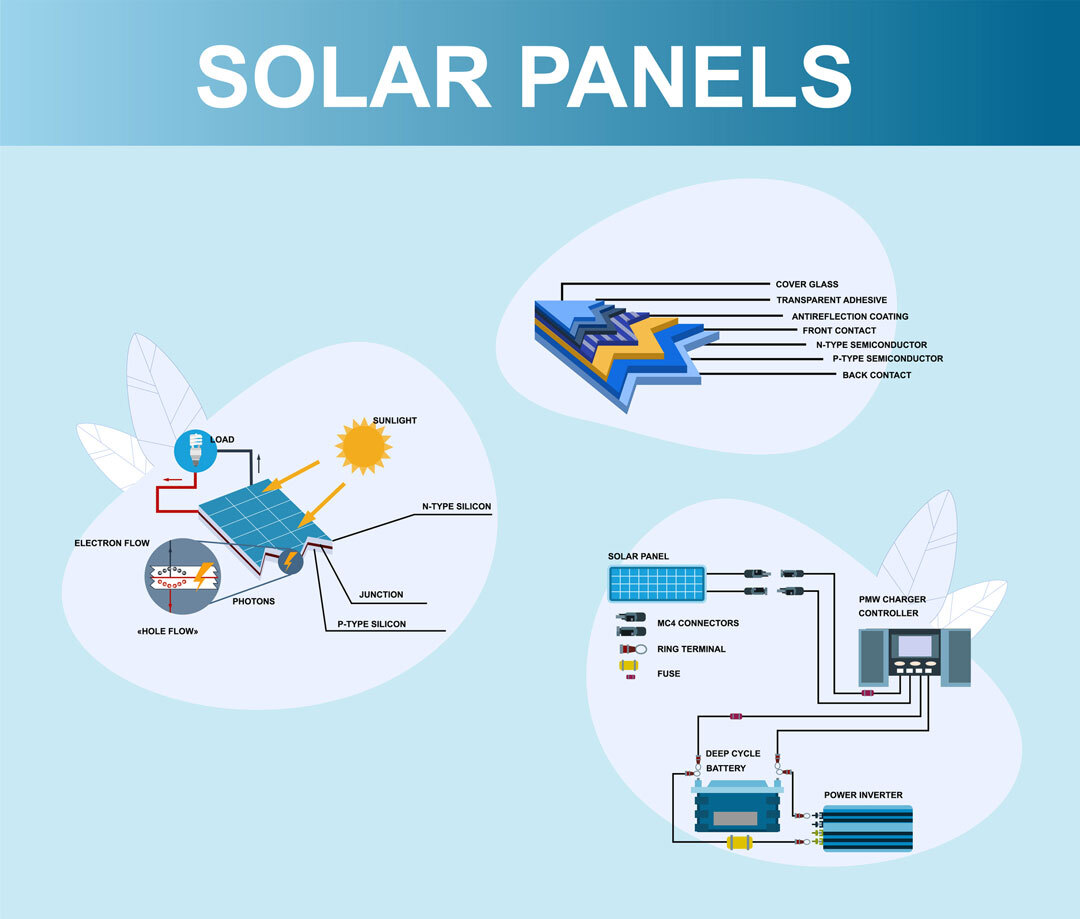How Do Solar Panels Work?
In the last decade alone, solar installations have increased by 33 percent, as the cost to install solar systems has rapidly decreased and the benefits of solar energy have become more widely known. However, despite the rapid uptake of solar energy across the globe, many often still wonder how exactly solar panels work.
How Solar Panels Convert Energy Into Electricity
The basic steps of solar panels are actually quite simple.
- Sunlight hits the solar panels
- The panels then convert the sunlight into electricity, moving through the array to the conductive wire
- The electricity is then funneled into the inverter, which converts the electricity from direct current (DC) to alternating current (AC)
- Once the electricity is AC, it can be dispersed throughout the house to power appliances
- Any extra energy is stored in solar batteries with a solar-plus-storage system
Of course, the science behind this process is a bit more complex. Let’s dive deeper into how exactly sunlight can power your home.
Sunlight Hits the Solar Panels
Solar panels are made up of photovoltaic (PV) cells. These cells are sandwiched between two pieces of semiconductive metal and can be very thin, about 1.3 microns in width. Sunlight hits the PV cells and the photons, particles of light, are absorbed. When they are absorbed, they knock free the electrons within the cell. Conductors are set up on the positive and negative sides of the cell to direct the current of the electrons. The strength of the current determines how much electricity will be produced. The energy current then heads towards the metal that lines the cell, and into the conductive wires.
At the most basic level, the key components of a solar panel are solar PV cells, polysilicon or silicon, metal, and glass. The most important component is the solar cells which convert sunlight into usable energy. Solar cells are the photovoltaic (PV) component of solar panels, meaning they produce energy from the sun.
Solar cells are made up of silicon and are protected by a sheet of glass over the panels which allows sunlight to be filtered into the cells. When exposed to sunlight, solar silicon dioxide cells generate an electric current, which is then converted to usable AC electricity via an inverter.
Solar cells are assembled using wiring that transfers the electricity. This wiring is soldered to the cells which are then assembled between a back sheet and the glass that protects the cells. The entire panel is held together with a metal frame.
This is an oversimplified process for how solar panels are made, so let’s break down the manufacturing process step by step for a better understanding.
DC Flows Through the Conductive Wire to the Inverter
Electricity then flows through the conductive wires to the inverter, where it is converted from direct current (DC) to alternating current (AC). This is because AC was selected as, and remains, the standard in American homes. DC is used to power small appliances, like lamps. With DC, electrons flow freely. On the other hand, with AC, electrons switch direction 50 to 60 times per second. This type of electricity is more cost-effective and efficient to transmit energy over long distances and is used for larger appliances.
AC Gets Dispersed
Once converted to AC, the electricity then flows through an electrical panel (breaker box) and is directed to outlets in the home. The breaker box contains breakers and each circuit is attached to a singular breaker. The breaker will monitor the circuit and in the event of a complication such as an overload, the breaker will immediately shut off that circuit.

Extra Energy Is Stored
On a sunny day, a single-family home likely will not use all of the electricity created from its solar system. The excess energy can either be kept in a battery, or energy storage system, or in some locations, it can be fed back to the grid. Storing the extra energy allows users to keep it for a cloudy or rainy day when the sun isn’t shining as brightly or as often. Also, it allows them to rely less on utility companies, which can help reduce or eliminate energy bills and ensure users have their own power during outages caused by severe weather. For grid-connected homes, it is essential to have an energy storage system for power outages, as you will otherwise not be able to access your solar energy system when the grid goes down.
What is the Best Solar Battery?
LiFeP04 batteries are efficient, long-lasting, and have zero maintenance which combines to make a great power source for storing solar energy, but they need one more component to work: a solar charge controller. The charge controller protects the battery during charging and is the gatekeeper between a solar array and a battery. it protects the battery during charging and also prevents the battery from sending current into the solar panels overnight when the battery’s voltage is higher than the solar array’s.
A solar system can be a great asset to help you meet your energy needs and reduce your reliance on your utility company. To get the most out of your solar power system, make sure to keep your solar panels clean, direct them south-east or south-west, and ensure there aren’t trees or buildings obstructing their access to sunlight. If you have any questions about setting up your solar or energy storage system, contact a RELiON representative today.